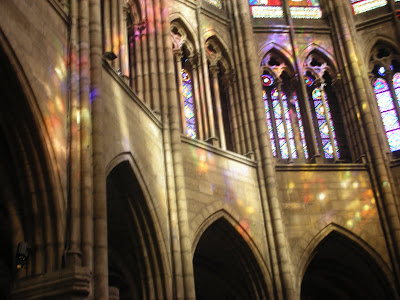I recommend checking out the following links from the Saint-Denis website:
Saint-Denis, une ville au Moyen-ÂgeCe site est édité par le ministère de la Culture et de la Communication dans le cadre de sa collection "Grands sites archéologiques". Il a été réalisé sous la direction scientifique de l'unité d'archéologie de Saint-Denis.
http://www.saint-denis.culture.fr
These are images of St Denis from what appears to be its official website. The first image is very large, so it is cropped here. If you click on the image you will be able to see the whole image. Enjoy.





